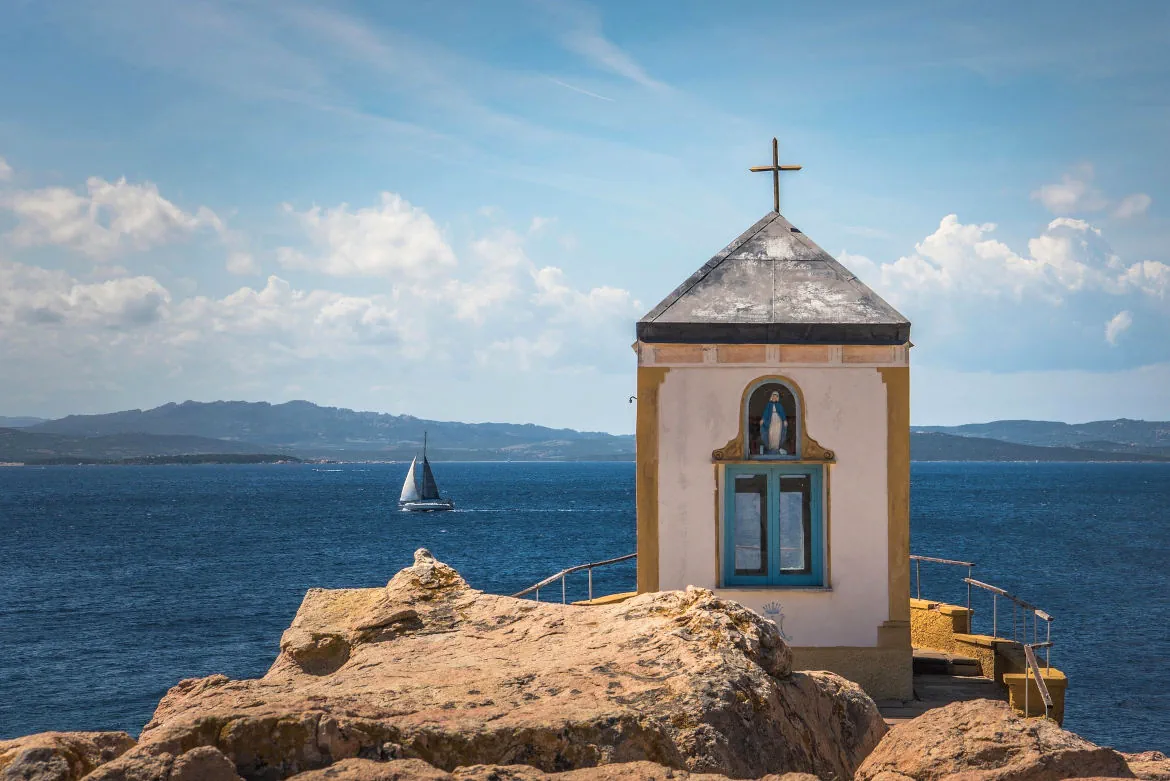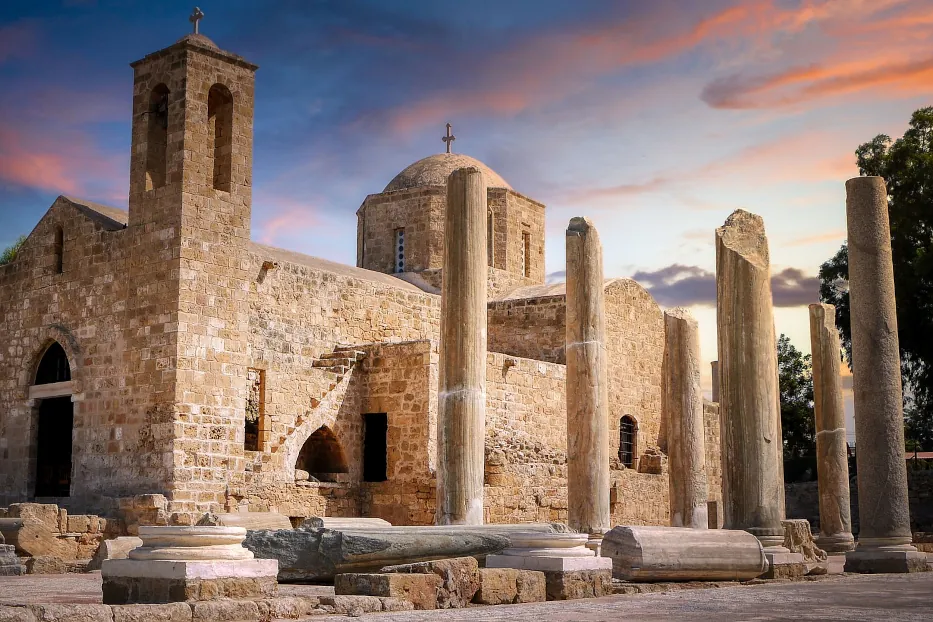Beneath the shimmering surface of the Mediterranean, Cyprus tells a complex story. Ancient and modern, European and Levantine, divided yet deeply connected, this island of sun and stone holds more layers than first meet the eye.
At just 9,251 square kilometres (3,572 square miles), Cyprus is the third-largest island in the Mediterranean, a place where olive groves stretch towards pine-clad mountains and waves break against Bronze Age ruins. Though its landmass is modest, Cyprus sits at an extraordinary crossroads—geographically in Asia, politically and culturally in Europe, and forever shaped by competing currents of empire and identity.
Table of Contents
A Divided Identity
The division of Cyprus remains one of Europe‘s most visible reminders of unresolved conflict. Since 1974, when a Turkish military intervention followed a coup d’état by Greek Cypriot nationalists, the island has been split. In the south lies the Republic of Cyprus, a Greek-speaking, internationally recognized state; in the north, the Turkish Republic of Northern Cyprus, acknowledged only by Turkey.
Across the island, reminders of the past linger: abandoned villages, rusted checkpoints, and the still-patrolled Green Line slicing through the capital, Nicosia. Yet beyond the politics, life thrives. Both communities share a fierce attachment to their land, their traditions, and the slow, sun-warmed rhythm of island living.
Europe or Asia?
Geographically, Cyprus drifts closer to Asia, sitting south of Turkey and west of Syria. Yet culturally, politically, and emotionally, it looks west. Cyprus became a member of the European Union in 2004 and adopted the euro as its currency in 2008.
Today, while the south fully participates in EU governance, EU law is suspended in the north. Even so, for most Cypriots, whether in bustling Limassol or the sleepy villages of the Karpas Peninsula, the island’s future feels firmly European.

The Five Largest Islands in the Mediterranean Sea
Among the many islands that dot the Mediterranean, five dominate in size and influence. Each presents a distinct blend of natural beauty, historical depth, and cultural identity.
Language and Time
In the Republic of Cyprus, Greek is the dominant language, while Turkish prevails in the north. English remains widely spoken across the island—a legacy of British colonial rule that ended in 1960—and is often used in business, tourism, and signage.
The island operates on Eastern European Time (UTC+2), shifting to Eastern European Summer Time (UTC+3) during the hotter months. Whether navigating bustling souks or modern malls, visitors pay with euros and find that Cyprus, though cheaper than much of Western Europe, is not the budget destination it once was.
A Land of Faith
Religion quietly anchors Cypriot identity. In the south, most inhabitants belong to the Greek Orthodox Church, with grand monasteries like Kykkos tucked into the Troodos Mountains, their walls alive with gold and color. In the north, Islam predominates, with Ottoman-era mosques bearing silent witness to centuries of cultural layering.
Yet for many Cypriots, faith is worn lightly and expressed more through seasonal festivals, village saints’ days, and the communal rhythms of life than through overt religiosity.

Symbols and Identity
The flag of Cyprus is itself a gesture toward peace: a map of the island in copper-orange (a nod to its ancient copper mines) floats above two crossed olive branches on a white background. It is a hopeful emblem, though unity remains elusive.
Today, the island’s population stands at around 1.35 million, with most people living in coastal cities like Limassol, Larnaca, and Paphos. Inland, stone villages, citrus orchards, and crumbling Crusader castles speak of older ways.
The people of Cyprus—Greek Cypriots and Turkish Cypriots alike—are renowned for their hospitality. In mountain cafés and seaside tavernas, conversations flow easily; visitors are often invited to share strong coffee or sweet pastries without ceremony.
Cyprus Today
Modern Cyprus is a study in contrasts. Luxury yachts bob in sleek marinas while goats meander through dusty vineyards just a few miles inland. Tech start-ups jostle for space in cities whose names echo from ancient maps. The island’s primary English-language newspaper, Cyprus Mail, chronicles these daily contradictions, covering everything from high politics to village fairs.
Economically, Cyprus is classified as a high-income country, though disparities between urban wealth and rural simplicity are easy to spot. For travelers, costs can vary widely: beachside cocktails may come at a premium, but a plate of freshly grilled souvlaki in a village square still offers excellent value.
Frequently Asked Questions About Cyprus
Is Cyprus the third-largest island in the Mediterranean Sea?
Yes, Cyprus is the third-largest island in the Mediterranean, after Sicily and Sardinia. It spans an area of about 9,251 square kilometers (3,572 square miles).
Are Cypriots Greek?
Cypriots can be either Greek or Turkish. The majority of the population are Greek Cypriots, who share cultural, linguistic, and religious ties with Greece. Turkish Cypriots, primarily in the north, have similar connections with Turkey.
Is Cyprus bigger than Crete?
Yes, Cyprus is significantly larger than Crete. Crete covers about 8,336 square kilometers (3,219 square miles), while Cyprus is around 9,251 square kilometers (3,572 square miles) in size.

Is Cyprus in 3 continents?
Geographically, Cyprus lies in Asia, close to the Middle East. Culturally and politically, however, it is often associated with Europe. Some also link it historically to Africa, due to its proximity to Egypt, but it is not officially part of three continents.
Why is Cyprus so famous?
Cyprus is renowned for its rich history, beautiful beaches, archaeological sites, and mythological significance, such as being the birthplace of the goddess Aphrodite. It’s also known for its divided capital, Nicosia, and unique blend of cultures.
Is Sicily bigger than Cyprus?
Yes, Sicily is larger than Cyprus. Sicily covers approximately 25,711 sq km (9,927 sq mi), making it the largest island in the Mediterranean.
What is bigger, Cyprus or Wales?
Wales is slightly larger than Cyprus. Wales covers about 20,737 km² (8,007 sq mi), more than double the size of Cyprus.
Is Cyprus a rich country?
Cyprus is classified as a high-income country with a diversified economy, particularly strong in tourism, financial services, and shipping. However, income levels and development vary across the island due to its political division.
Is Cyprus in the EU?
Yes, Cyprus is a member of the European Union. It joined the EU in 2004. However, EU laws are currently suspended in the northern part of the island, which is controlled by the self-declared Turkish Republic of Northern Cyprus, recognized only by Turkey.

Is Cyprus more Greek or Turkish?
Cyprus is more Greek in terms of population and culture. About 77% of the population are Greek Cypriots, while Turkish Cypriots make up roughly 18%.
Is Greece richer than Cyprus?
As of recent data, Greece has a larger and more diverse economy overall, but in terms of GDP per capita, Cyprus has at times surpassed Greece, especially during economic downturns in Greece.
Why does Turkey want Cyprus?
Turkey maintains a military and political presence in Northern Cyprus to support the Turkish Cypriot community and claims it as protection against Greek Cypriot dominance. The issue is deeply rooted in the island’s colonial history and ethnic tensions.
Can Greeks move to Cyprus?
Yes, as Cyprus is a member of the EU, Greek citizens can live, work, and travel freely in the Republic of Cyprus, which is also in the EU.
Did Greece ever own Cyprus?
No, Greece has never officially ruled Cyprus. The island was under British rule until 1960, when it gained independence. However, many Greek Cypriots have historically supported unification with Greece, a movement known as Enosis.
